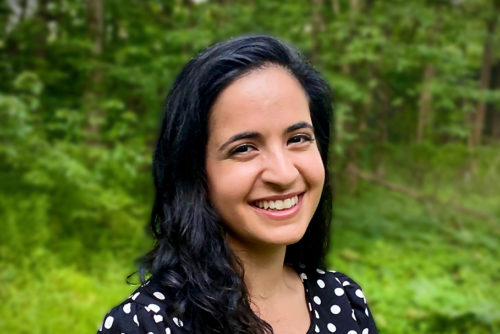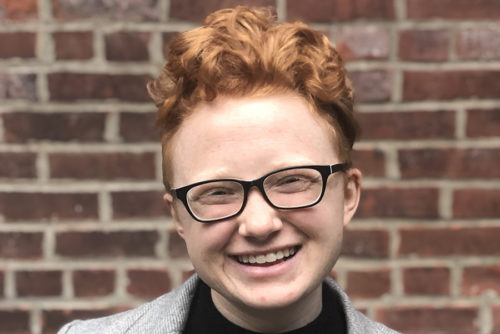PHX Perspectives | July 20th, 2020
Despite initially being perceived as the “great equalizer,” Covid-19 has magnified existing and unacceptable inequities, particularly along racial lines. In the U.S., Black, Indigenous, and Latinx individuals are at least 4 times more likely to be hospitalized due to Covid-19 than their white counterparts. Additionally, rates of Covid-19 cases and related deaths are disproportionately higher in Black and Latinx Americans (and likely Indigenous Americans) when compared to white Americans.
In public health, we recognize that health is fundamentally shaped by the environments in which we live, work, learn, and play, and not by the actions of individuals. We also know that persistent systemic racial oppression has resulted in health disparities across racial lines for centuries. Though the U.S. government’s relationships with Black, Indigenous, and Latinx communities are different, the resulting disparities are similar. Historical and ongoing discriminatory governmental policies and racism-related stress result in underlying health conditions that exacerbate Covid-19.
The consequences of Covid-19 do not end at the hospital doors: communities of color are more likely to experience the pandemic’s harmful effects on wealth, housing, and education long after the pandemic is over. Wealth, housing, and education are self-reinforcing and inextricably linked to health. If we continue on our current path, the “new normal” won’t just be standing six feet apart and intensive cleaning regiments- it will be an even less equal society. Covid-19 offers us an inflection point to critically examine the social conditions that have created these inequities and to build a more just and equitable world.
Wealth
Wealth is unevenly distributed across American society, particularly along racial lines. In 2016, the median wealth of white families in the U.S. was $171,000, compared to $20,700 for Hispanic families and $17,600 for Black families (the median wealth of Native Americans was $5,700 when it was last measured in 2000). Similarly, poverty rates are about twice as high among Black, Indigenous, and Latinx Americans when compared to white and Asian Americans.
The racial wealth gap is reflective of the systemic and cyclical nature of poverty, not of individual financial choices. For centuries, resources and services—including housing and education—have been systemically prioritized to wealthier and primarily white communities. This leaves communities of color trapped in a cycle of poverty. Poverty is cyclical because those in poverty do not have sufficient disposable income to grow their wealth (in investments like real estate, education, or the stock market); instead, their income is primarily used to meet basic needs like shelter and food. The fact that the minimum wage hasn’t been raised since 2009, despite the increasing cost of living, contributes to challenges in generating disposable income.
The racial wealth gap contributes to racial health inequities. Wealth affords access to health-promoting resources like nutritious foods, health care, and residence in toxin-free neighborhoods. As such, racial groups with higher rates of poverty experience higher rates of disease—in this case, the underlying conditions that increase susceptibility to Covid-19.
Currently, about 38 million Americans live in poverty, and the economic effects of Covid-19 are estimated to impoverish another 21 million. Job loss is one of the highest contributors to entering poverty; thus, early and bold interventions to address poverty in the time of Covid-19 are vital. Unfortunately, a one-time stimulus check of $1,200 and an additional $600/week of unemployment benefits for a limited period may be insufficient in addressing the long-term economic implications of this crisis.
Housing
Due to a legacy of discriminatory housing policies and racism, generations of Black, Indigenous, and Latinx Americans have been denied opportunities for homeownership. As a result, people of color rent at higher rates than white Americans. With unprecedented job loss and work slowdowns due to Covid-19, many tenants are falling behind on rent. While certain states have implemented emergency moratoriums that temporarily suspend evictions, experts foresee a wave of evictions once these moratoriums expire. If renters are not adequately protected during Covid-19, these preexisting racial inequities in housing will certainly worsen.
During Covid-19, Black and Latinx renters have been about twice as likely to report not paying or deferring rent payments when compared to white renters. This troubling disparity foreshadows that evictions will disproportionately affect households of color once the moratoriums expire. Due to systemic barriers to accumulating wealth, households of color have fewer emergency resources to keep up with rent and weather the economic disruption of Covid-19.
Housing has a substantial influence on health. Individuals faced with housing instability are at higher risk of adverse health outcomes, including substance use, mental health disorders, and suicide. Additionally, displaced renters may need to resettle in crowded households or shelters, which hinders the ability to self-isolate and increases the risk of contracting and spreading Covid-19. Thus, the impending wave of Covid-19-related evictions threatens to exacerbate racial disparities not only in housing security, but also in health outcomes.
Federal interventions have not provided direct assistance to impacted renters. While some states have implemented critical policies to protect renters such as rental assistance subsidies, most have not. Policymakers have recently proposed extending the nationwide moratorium on evictions through March 2021, along with similar state-level proposals. As public health professionals, we must advocate for policies that protect the health and security of those vulnerable to evictions during this pandemic.
Education
Much like inequities in wealth and housing, educational inequities are systemic in nature. Schools with predominantly lower income students of color are most likely to be underfunded because of the U.S.’s segregationist history of schooling and continued reliance on property taxes to fund school districts. About 45% of Latinx students, 44% of Black students, and 38% of Native students attend high-poverty schools, compared to 8% of white students. Because students of color are typically concentrated in schools that already lack proper resources, the effects of Covid-19 are particularly devastating to these schools.
Students of color living in poverty face immense challenges to keeping up with their schoolwork during Covid-19. Caregivers who have lost a job or cannot work from home may be unable to provide academic support to children learning from home. Students who do not have internet access at home have a harder time attending online classes and completing assignments. Students of color living in poverty are likely to attend the same schools. Thus, entire districts are at risk of falling behind, sometimes jeopardizing federal funding for schools.
Covid-19 has serious mental and behavioral health implications for students of color. Children in families experiencing job loss, eviction, or death face significant challenges in coping with such traumas. Experts predict that major life disruptions caused by Covid-19 will result in an uptick in behavioral issues for students. These issues will be exacerbated by the fact that many kids of color in low-income neighborhoods will return to schools that do not have a sufficient number of counselors, but do have police officers.
Education and health are inextricably linked: education creates opportunities for better health, and poor health often puts education at risk. Quality education often leads to higher-paying jobs, livable earnings, and the resources for good health, such as health insurance.
Schools need flexibility in how they use Covid-19 stabilization funds. However, if schools only focus on addressing the short-term challenges posed by Covid-19, the underlying issues in education equity—especially regarding academic success and mental health—will persist.
Paths Forward
A comprehensive and equitable approach to Covid-19 requires public health professionals to address not only Covid-19, but also the underlying social conditions and systems that lead to its disproportionate impact on communities of color. Our immediate responsibility is to ensure that racial disparities remain at the center of all Covid-19 government relief packages:
- Wealth Equity: Distribute monthly stimulus checks and continue supplementary unemployment benefits throughout the pandemic
- Housing Equity: Extend moratoriums on evictions and provide renter assistance subsidies
- Education Equity: Stabilize schools with equitable distribution and flexible spending of congressional stimulus funds
It is imperative that our advocacy continues beyond Covid-19. Our long-term work is to establish the conditions of an equitable society—one where all Americans have equal access to health-promoting systems and resources:
- Wealth Equity:
- Increase the minimum wage to keep up with inflation
- Establish a universal health insurance plan that is not tied to employment status
- Invest in and expand safety net programs, such as SNAP, WIC, and TANF
- Housing Protections:
- Promote tenant rights
- Increase access to affordable housing
- Expand pathways to home ownership for communities of color
- Education Equity:
- Invest in broadband infrastructure and educational technology for all students
- Fund school-based social-emotional learning initiatives, such as counselors, social workers, and other educational support services
- Disentangle public school funding from local property taxes
If we don’t take bold and decisive steps to address racial disparities, systemic racism will threaten public health long after Covid-19 is behind us. In order to create a society in which health is accessible to all, we must dismantle racist systems and policies that perpetuate health inequities. We must invest in the wealth, housing, and education of communities who have long lived at the margins of our society. Our goal should not be to return to our “normal” lives before Covid-19; our norms are rooted in systemic racism. Our responsibility is to honestly reckon with the systems that created inequities before Covid-19 and deepened them during the pandemic. We must reimagine and rebuild a more equitable “new normal.”




This is so thorough and fantastic. Awesome work friends, thanks for sharing!
Well done!
Wonderful guys! Especially the focus on education and thank you for adding the changes we need to make moving forward.
Great job highlighting the inequities that have brought us to our reality today, and how the pandemic itself and the response is further perpetuating these inequities.